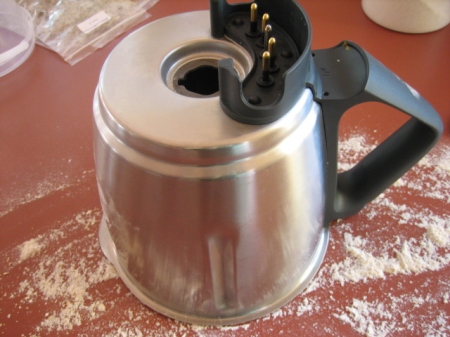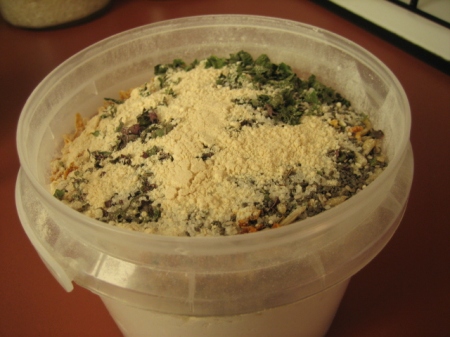Although this is not a cooking blog and in no way would I call myself a cook, it always surprises me that the post that receives the most search hits is the one on Thermomix ice cream.
I guess that’s a tribute to the popularity and interest in what has been for me, a huge asset to my kitchen exploits:

So here’s another to add to the collection. I made bread today—in the Thermomix—and it never fails.
Right. This is my basic recipe:
100 gm bread wheat (I buy this in a 5 kg bag from a local health food shop)
400 gm bread wheat flour (Wallaby Brand Baker’s Flour from the supermarket—it has to be bread flour)
450 ml water (gm if you want to weigh it…same diff)
3 tsp dried yeast
2 tsp salt
2 tsp bread improver (from the supermarket)
That’s the basics. What you add next is up to you. I add one tablespoon of each of the following:
Full cream milk powder
Linseed
Sesame seed
Sunflower seed
Wheat germ
LSA mix (linseed/sunflower/almond. I grind my own—in the Thermomix)
Oat bran
Dried pumpkin (I make my own)
I’ll often add anything else I have, or fancy, for example, some dried nettle, caraway seed, amaranth seed or whatever, generally only teaspoonfuls of these.
Note that the correct amount of total flour for this recipe is 500 gm; 400 gm baker’s flour + 100 gm ground wheat = 500 gm. Sometimes I’ll substitute the 100 gm of ground wheat with ground spelt grain, or spelt flour, or amaranth flour. Haven’t tried rye flour yet, but will, one day.
So. Into the TM bowl goes the wheat:
One minute on speed 9 and there’s wholemeal wheat flour:
Add the water and the yeast and stir on speed 1 for 5 mins at 37 C.
Add the rest of the ingredients (see extra notes at the end) and mix to combine, 2 seconds on speed 7:
Set the dial to the closed lid position and knead 6 minutes on interval speed (sorry, non-TM owners…this is just TM-speak):
Upend the bowl onto a floured bench and tip out the dough. You’ll need to remove the base and push the blades out, then extricate them from the dough:
It’s not hard…the dough is quite stretchy:
I like the tactile experience of kneading bread, so I always give it a few turns by hand at this point, so I can gauge the strength of the dough:
Into the tin, light spray with water and sprinkle some polenta on top for a nice yellow finish:
Cover with a dampish teatowel and into the Excalibur dehydrator at 40 C to rise:
Allow to rise just to the top of the tin, and into the oven at 180 C for 30 minutes:
Ta-Da!
Another Thermomix success story!
I slice it thickly, with an electric knife (does a nice neat job) and freeze in packs of 4-5 slices. One slice with breakfast. It’s so nice, I’m having just butter on it at the moment.
Extra notes:
I prepare 2 or 3 batches of the basic mix (minus wheat and yeast), beforehand and store them in the fridge. That way I’m ready to go at a moment’s notice:
I grease the tin with olive oil. I used to use a pastry brush to brush it on. I hate spray cans, but I bought one of olive oil just for the bread. It’s much easier and quicker to apply.






































